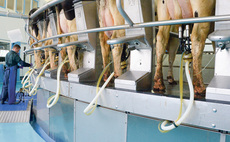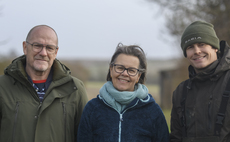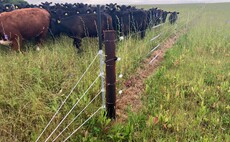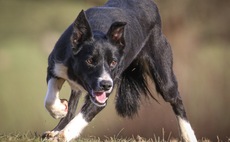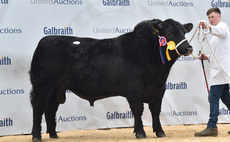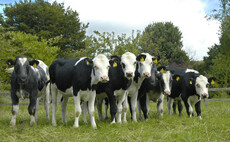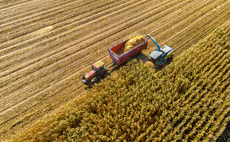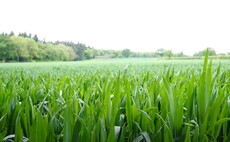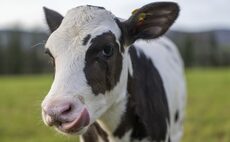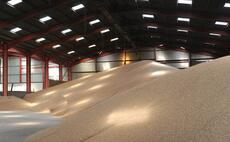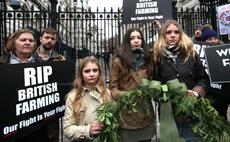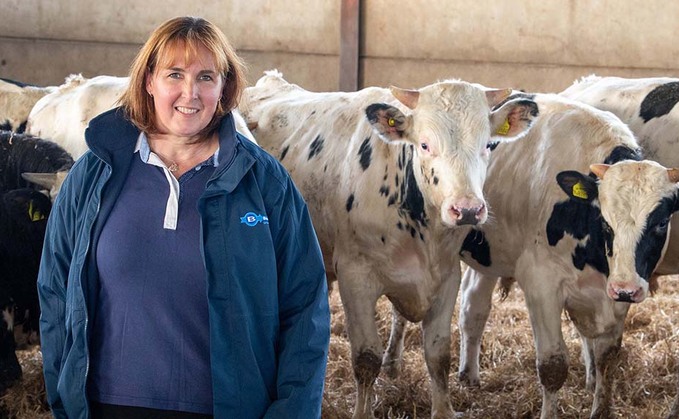
WITH a throughput of 1,000 Holstein Friesian bulls per year, beef farmer Louise Tudor praises a simple system for delivering results when finishing cattle. Hannah Noble reports.
On seeing an advert for Buitelaar in �������� Guardian in 2016, Louise Tudor's father in-law, Alan made an enquiry and they visited a calf collection centre and soon afterwards took delivery of their first batch of Friesian bull calves. Four years on and Mrs Tudor is one of the company's biggest finishers.
Mrs Tudor's husband, Jonathan who she married in 1997, died 11 years ago, but she continued to work in partnership with Alan until he died last year at the age of 83.
Upper House Farm, Yockleton, Shrewsbury, has been in the Tudor family for 72 years and over that time has seen many different enterprises.
In 1998, with her husband and father-in-law, Mrs Tudor began rearing British Blue calves, taking them right through to finishing. She says they soon realised they could rear more calves than they could comfortably finish and they sought another outlet for some of the weanlings. So they continued to rear for other people as well as themselves for 13 years.
Mrs Tudor says: "We trialled a few Friesian calves for the first time in 2016. By the second year we were 30:70 Friesians to British Blues and towards the end of that year it was more like 50:50."
They calculated 12 months of costings between the Blues and the Friesians and Mrs Tudor says for their system the Friesians came out on top.
Finished
She adds: "Alan was very much a beef man and he had finished continentals all his life - he just liked the look of them.
"It took a lot for him to come round to the Friesians but he was on board once they got into the system and got going."
"Alan was getting older, he was 80 by this point. I ran the farm with him for the last 10 years and the plan was for me to be able to carry on by myself. I could not rear calves and finish on my own, there was just too much work. So we either had to rear calves to weanlings or to finish cattle."
Calves
In 2018 the last batch of calves arrived on-farm and in January 2019 they bought their first batch of weaned calves at four-months-old, reared by Buitelaar calf rearers.
She says: "All of 2019 it was a case of having 50 Friesians a month arriving as and when we could fit them in because we still had the Blues which were taking up the space we needed to put the Friesians.
"By November 2019 all the Blues had gone, so as of December we increased the numbers to 100 per month, in two batches of 50. There are now up to 650 Friesian bulls at Upper House Farm at any one time."
The calves arrive on-farm at four months old at an average weight of 145kg. From then, the only reason the cattle are handled again up to 10 months old is to move sheds.
At 10 months old all the cattle are weighed and using an average daily liveweight gain estimate of 1.4kg per day Mrs Tudor calculates when each animal will hit its target to leave the farm.
There are two specification set out by Buitelaar - which agrees to buy back all the animals - the first is for its ‘Rose' brand which requires cattle to reach a deadweight of over 200kg between eight and 12 months old. The second specification is for its ‘Select' brand which requires cattle to reach a carcase weight of more than 220kg between 12 and 14 months of age.
Mrs Tudor produces cattle to hit the specification for the Select brand. Buitelaar pays a flat rate per kilo on a P+2 or better carcase across both its brands.
Terry Coupe, Buitelaar head of integration, says: "We are aiming for P+2 or better carcase classification and on average we run at about 97 per cent fat class 2 and better for the Friesian bulls."
Cattle are slaughtered at Woodhead's, Spalding, and forequarters and flanks are supplied to McDonalds. The steak cuts and the rest of the carcase is sold to catering butchers and high-end restaurants.
On average Mrs Tudor's cattle reach the target weight of 450kg liveweight between 11 and 12.5 months old and kill out at 51 per cent with an average carcase weight of 242kg.
Mr Coupe says: "If you were to look at the general beef price averages over the last four years it has been like a rollercoaster, our price does not move that much at all, at most 10-15p.
"Our prices top to bottom dropped just 10p/kg through Covid-19 but the general beef price has swung this year by 60-70p/kg top to bottom.
"A 60p/kg swing on 350kg carcase is £210 an animal 10p/kg swing on a 240kg carcase is £24 a beast."
In recent months Mrs Tudor has managed to decrease her average age to target weight by about one month which means she is on track to finish 1,200 cattle in 2021.
She adds: "We were slaughtering the Blues at 16 months old and by killing the Friesians at 12 months old we can get more through per year.
"The Blues were on-farm for an average of 12 months, whereas the Friesians are on-farm for about seven months meaning we are doing 1.6 batches of Friesians to one batch of blues which really pays off."
Mrs Tudor says the decrease in time taken to reach weight targets is down to changes to the feeding protocol and ensuring cattle have access to the total mixed ration (TMR) on an almost ad lib basis. This also means the cattle are more content.
She says: "They are now probably eating the same amount despite being there for a month less but they are getting to weight more quickly.
Mrs Tudor says getting the ration right is a really important factor in hitting the growth targets set out. She works closely with Wynnstay and all the cattle on-farm are fed two TMRs which contain maize silage, rolled barley, a concentrate blend, straw and molasses.
The first ration is fed from four to seven months old. This is a grower ration and contains 16.5 per cent protein.
The second is the finisher ration which is fed from seven months old until leaving the farm and contains 14 per cent protein.
Mrs Tudor says: "The benefit of working with Buitelaar is you know how much the calves cost and you know what price you are going to get for your product from the moment the calf comes off the lorry as long as you hit the targets."
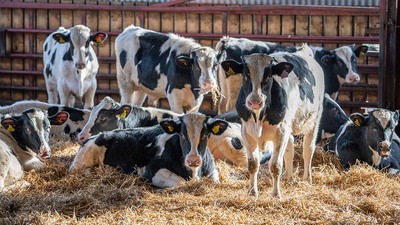
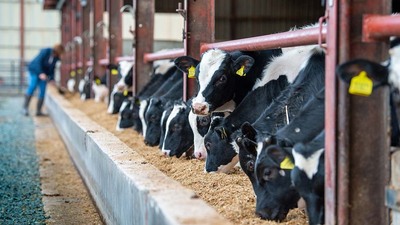
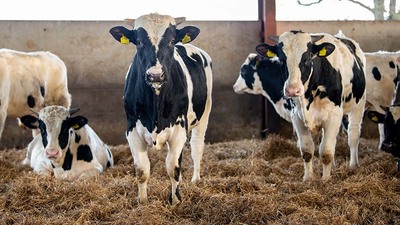
Farm facts
- Upper House Farm is 162ha (400 acres)
- Maize and barley, which is used in the grower and finisher diets, is grown on the farm in a contract farming agreement.
- Mrs Tudor experiences just 1.2 per cent cattle mortality.
- All calves are vaccinated for blackleg on arrival, a disease which has proven an issue on the farm previously.



